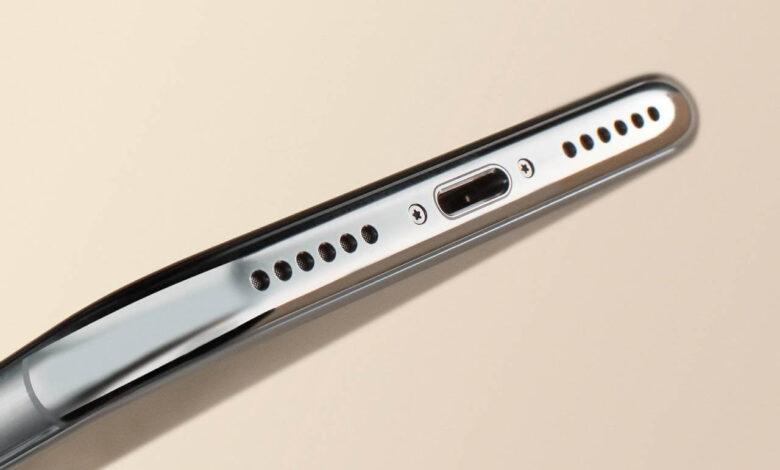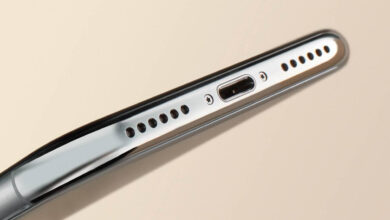How to Fix Your Phone Speaker: Simple DIY Solutions

If you’ve found yourself tapping your phone to the rhythm of silence when you expected a symphony of sound, you’re not alone. Mobile phone speakers can sometimes cut out, leaving you without those precious tones that notify you of calls, messages, or provide the soundtrack to your morning routine. Whether it’s due to a software glitch, accidental settings changes, or a mystery that’s yet to be solved, your phone’s lack of sound can be as frustrating as a puzzle with missing pieces.
Before worrying about hefty repair costs or shopping for a new device, there are several tried-and-true techniques you can attempt to bring your phone’s speaker back to life. Often, the fix is simpler than you might expect, and it starts with checking the basics. Maybe your phone’s volume is down, or perhaps it’s stuck in silent mode. It’s also worth inspecting the speaker grills for any blockages and confirming that your media isn’t being sent to another device via Bluetooth. These preliminary checks can sometimes save you time and get your phone’s audio capabilities humming again in no time.
Escalating from basics, there are additional steps beyond the initial glance and tweak which can restore your auditory experience. Rebooting your device can often resolve inexplicable issues, and diving into your phone’s settings can uncover if any features like ‘Do Not Disturb’ have been accidentally enabled. Your phone is an intricate device, but with some patience and a methodical approach, most speaker-related issues can be resolved without professional aid. So before you visit a repair shop, let’s explore the common troubleshooting methods that might just do the trick.
Identifying the Problem
Before diving into solutions, it’s crucial to precisely identify what’s wrong with your phone speaker. You’ll need to examine different aspects, from hardware to software.
Physical Inspection
First, check your speaker for any visible signs of damage. Look for any obstructions, debris, or dust that might be blocking the sound. You can gently clean the speaker grill with a soft brush or compressed air to remove any external particles. It’s also wise to verify if water or moisture has entered the speaker area, as this could significantly affect the sound output.
Software Check
Next, consider software issues that might be muting your sound. Restart your phone to see if that resolves the problem, as rebooting can often fix minor software glitches. Additionally, check if a recent software update coincides with the problem’s onset and investigate if others have reported similar issues with the update.
Sound Settings Review
Lastly, dive into your phone’s sound settings:
- Volume Levels: Ensure your volume isn’t set to zero or too low to hear. Increase the volume using the side buttons or through the settings menu.
- Mute/Silent Mode: Make sure your phone isn’t on mute or silent mode inadvertently. Check for a silent mode icon in your status bar.
- Do Not Disturb: Disable ‘Do Not Disturb’ mode if it’s turned on, as this can silence your notifications and calls.
- Sound Profiles: If your device has different sound profiles (like ‘General’, ‘Outdoor’, etc.), try switching between them to ensure one isn’t silencing your speaker.
Basic Fixes
Before you consider hardware repairs for your phone speaker issues, there are a few basic fixes that can often resolve minor problems with minimal effort.
Restarting Your Phone
A simple reboot can fix a surprising number of glitches, including speaker issues. To restart your phone:
- Android: Hold the power button, then tap “Restart.”
- iPhone: For models with a Home button, hold the power button until the “slide to power off” appears, slide it, then hold the power button to turn the phone back on. For models without a Home button, hold the volume button and the side button until the power off slider appears.
Cleaning the Speaker
Dirt and debris can impede your phone speaker’s performance. Here’s how to clean it properly:
- Use a soft-bristled brush or a dry toothbrush to gently brush the speaker grilles.
- An air canister can blow away hidden particles; however, keep the nozzle at a distance to avoid moisture buildup.
Advanced Troubleshooting
In this section, you’ll find more in-depth methods to resolve issues with your phone’s speaker—these may fix problems that standard fixes can’t.
Updating Your Operating System
Ensure that your Android phone is running the latest operating system. Outdated software can cause speaker problems. To check for updates, go to Settings > System > System Update. If an update is available, follow the onscreen instructions to install it.
Resetting Sound Settings
Your phone might be experiencing software conflicts with its sound settings. Try resetting them to factory defaults by navigating to Settings > General management or System > Reset > Reset all settings. This action won’t delete your personal data, but it will reset system settings like Wi-Fi, Bluetooth, and notifications.
Third-Party App Conflicts
Conflicts with third-party apps can sometimes disrupt speaker functionality. Start by booting into Safe Mode:
- Long-press the Power button.
- Tap and hold the Power off button on your screen until the Safe Mode prompt shows up.
- Tap Safe Mode to restart your phone with no third-party apps running.
Test your speaker in Safe Mode. If it works here, likely, an app you’ve downloaded is the issue. You’ll want to uninstall apps one by one to identify the culprit.
Professional Repair Options
When your phone’s speaker isn’t working, seeking professional repair services is a reliable choice. These services can provide warranties and have the expertise needed to ensure your device regains its sound quality.
Service Center Assistance
Visiting an authorized service center is one of the best ways to address speaker issues. Technicians at these centers are trained to diagnose and repair your device with genuine parts. They can also provide a warranty on their repairs, giving you peace of mind regarding the longevity and functionality of your repaired speaker.
DIY Repair Kits
Alternatively, consider a DIY repair kit if you’re confident in your technical abilities. These kits often come with the necessary tools and instructions. Just be sure you’re following a reliable guide and take precautions like turning off your phone to avoid electrical damage. Some issues, like water in the speakers, can also be resolved with online resources that facilitate the ejection of water from your phone’s speakers.
Preventive Care and Maintenance
Keeping your phone’s speaker in top condition is not just about fixing issues as they arise, but also about preventing them. Here are some steps you can take to ensure your phone’s speaker keeps sounding clear.
Protective Cases
Choosing the Right Case: When selecting a protective case, ensure it has precise cutouts for your speaker that do not obstruct the sound. A case that’s too tight or poorly designed may muffle audio or allow debris to gather more easily.
- Material Matters: Invest in cases made from high-quality materials that offer both shock absorption and a barrier against dust.
Regular Cleaning Schedule
Routine Cleaning: Implement a routine for cleaning your speakers to prevent dust and grime accumulation. Set a reminder every couple of weeks to attend to your phone’s speaker.
- Cleaning Supplies You’ll Need:
- Soft brush
- Microfiber cloth
- Cleaning putty or tape
- Gently Brush Away Visible Dust: Use the soft brush to sweep away any particles on the surface.
- Microfiber Cloth for Damp Cleaning: If needed, lightly moisten the cloth with alcohol or screen cleaner to wipe the area.
- Putty or Tape for Stubborn Grime: Lightly dab cleaning putty or tape onto the speaker to lift away stubborn dirt. Avoid pressing hard to prevent pushing debris further in.
Alternative Solutions
When your phone speaker is not functioning correctly, and troubleshooting hasn’t resolved the issue, consider leveraging alternative listening devices. These can enhance your audio experience without needing immediate repairs to your phone’s speaker.
External Speakers
Using external speakers is a practical solution to bypass a faulty phone speaker. External speakers, which can range from portable Bluetooth varieties to full-sized stationary units, often offer improved sound quality and higher volume levels. To connect, simply use your phone’s audio jack or Bluetooth settings. Remember to charge portable speakers regularly to avoid power interruptions during use.
Bluetooth Devices
Bluetooth devices such as earbuds, headphones, or hands-free car systems provide the convenience of wireless audio with generally simple pairing processes. To begin, enable Bluetooth on your phone and make sure the device is in pairing mode. Once connected, these devices can offer a personalized audio experience, with some models providing noise cancellation and enhanced sound clarity. Always keep the devices within the recommended range for optimal performance.
Frequently Asked Questions
If you are experiencing issues with your phone speaker, you’re likely looking for quick and reliable solutions. Here are some common questions and straightforward fixes to help you resolve these issues.
Why is there no sound from my phone calls?
Check if your phone is on silent mode and adjust the volume settings appropriately. If the issue persists, there may be a software malfunction or the speaker could be obstructed by debris.
What steps can I take to address water damage in my phone speaker?
Turn off your phone immediately and remove the battery if possible. Use a soft, absorbent cloth to dry the outside of the phone, and then place it in a container filled with silica gel packets or uncooked rice to absorb the moisture.
How can I rectify a crackling noise coming from my phone speaker?
First, you should restart your phone to clear any minor software issues. If the crackling continues, the speaker may be dirty or damaged. Gently cleaning the speaker grille with a soft-bristled brush can remove dust particles.
What should I do if my phone speaker is not working but my headphones are?
If headphones work but the speaker does not, your phone’s audio output may be misdirected. Try disconnecting the headphones and cleaning the headphone jack, as lint or dirt can cause a false connection.
How can I troubleshoot sound issues on my phone?
Start by rebooting your phone to resolve any temporary issues. If that doesn’t work, go to your sound settings and check the volumes are up. If there’s still no sound, you may need to clean the speaker or consider professional repair.
What are the signs that my phone speaker might be damaged?
Signs of a damaged phone speaker include distorted or unclear sound, lower volume than usual, and strange noises during audio playback. If these symptoms occur, your speaker may need to be repaired or replaced.

